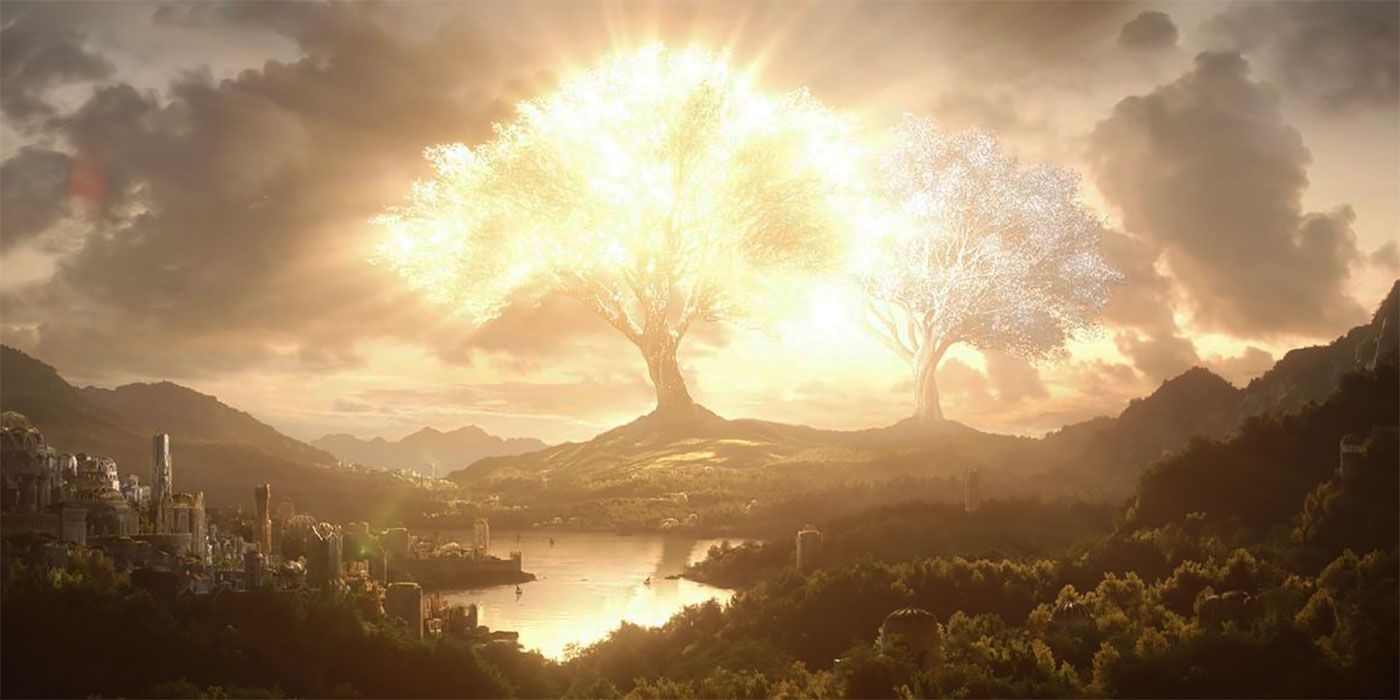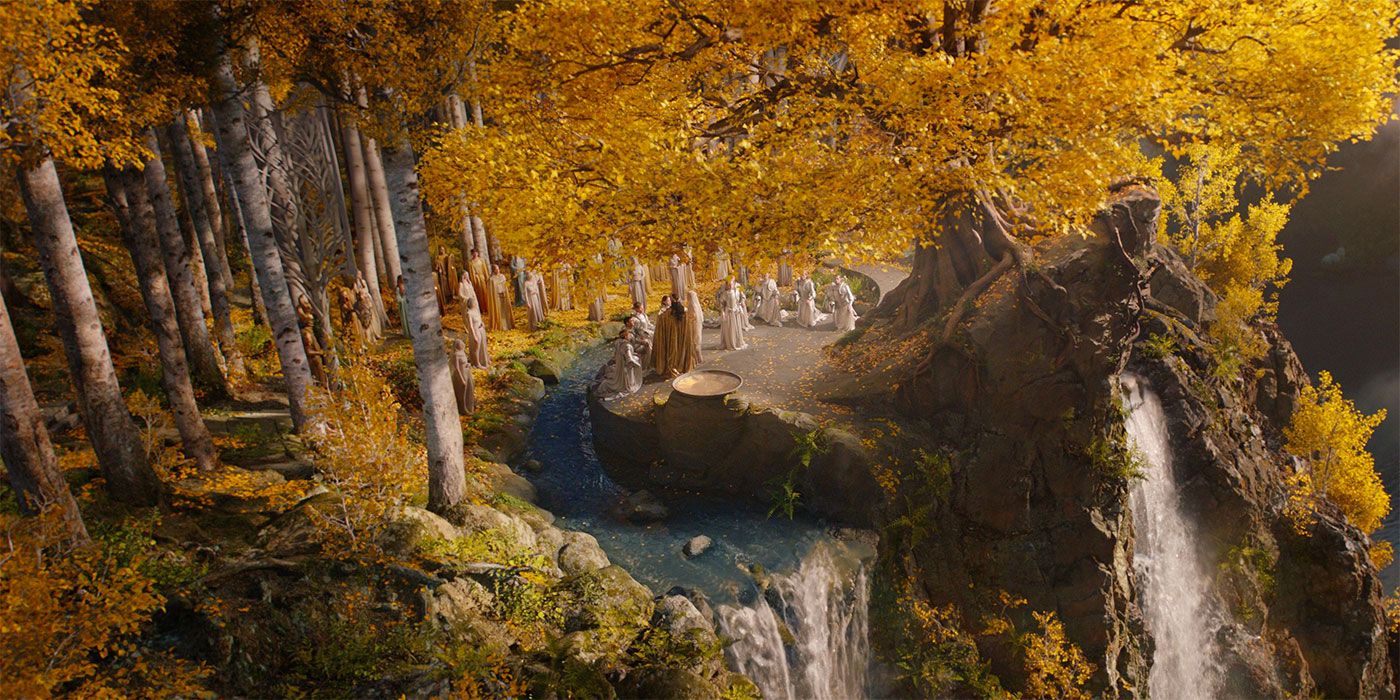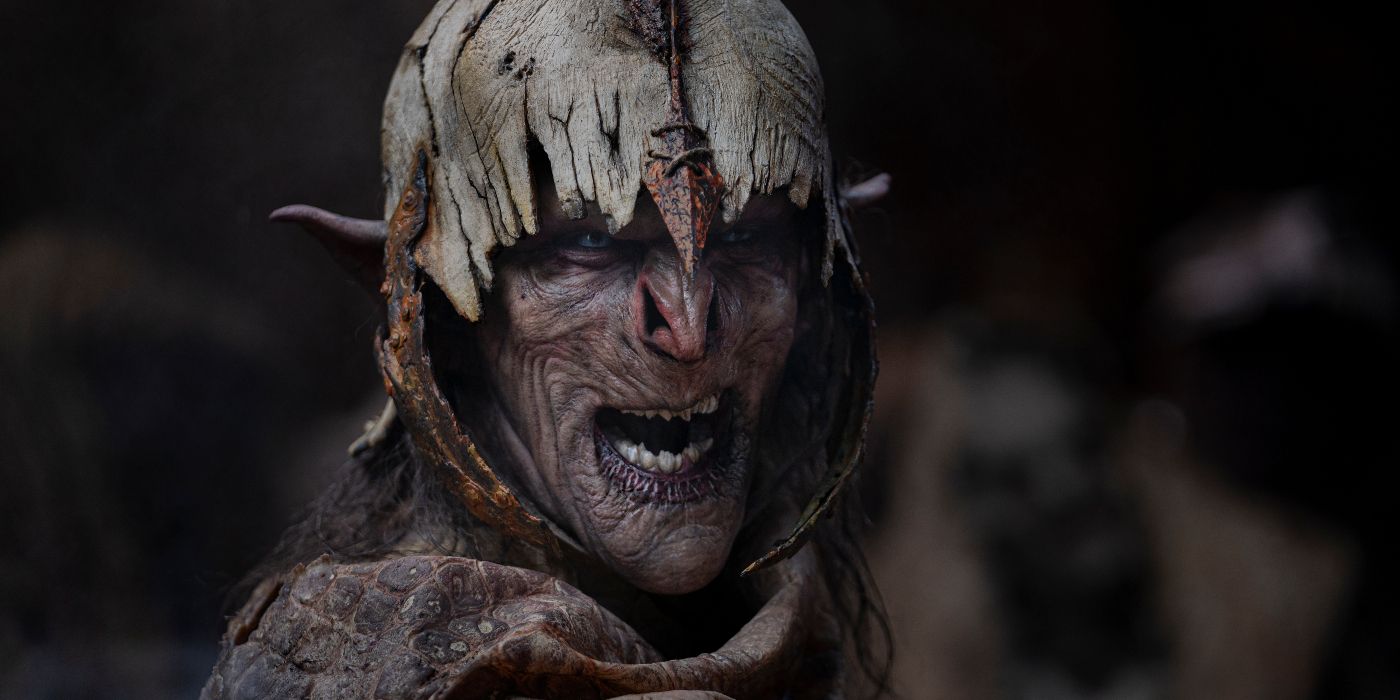
Editor’s note: The below article contains spoilers for Episode 1 of The Lord of the Rings: The Rings of Power.
While it’s thrilling for fans of Tolkien’s literary work to see Valinor come to life, people who only watched the movies developed by Peter Jackson might feel a little lost with the information dump of The Rings of Power’s premiere. That is no surprise since the lore created by Tolkien is vast and filled with grand events long before the world ever heard of Frodo Baggins. So, now that The Rings of Powers is finally available on Prime Video, it’s time to discuss what exactly are the Trees of Valinor. Where did they come from? How did they die? And what’s their relation to the Sun and Moon?

Let There Be Light in Valinor
When the Valar first descended to Arda (the world of Middle-earth) and started to shape the world, they were followed by Melkor, a Vala who defied the will of Ilúvatar, the One God, and corrupted every work of beauty his siblings tried to build. At that time, the Valar decided to take residence in Middle-earth, and to lighten up the world, they built two giant lamps: Illuin, a silver lamp, was placed in the North of Middle-earth, while Ormal, the golden one, was placed in the South. There were no nights and days when Arda was created, as the only light available came from the stars and the two lamps.
According to Tolkien’s lore, the Trees of Valinor came to life through a song sung by Yavanna, the Lady of the Earth, a Vala who loved the flora most of all things. They grew in Valinor thanks to the tears of Nienna, the Weeper, a Vala responsible for spreading mercy on Arda. And just like the lost lamps, each Tree of Valinor spread a bright light over the lands. The first Tree, Telperion, shone with silver light. As for Laurelin, the Tree shone in bright gold. Each Tree of Valinor was ensnared in an eternal cycle of flourishing and shining bright for seven hours and then slowly waning again. However, the two Trees took altered turns in their cycles. Therefore, Valinor started to count time by the passage of days, with each day lasting twelve hours. For a full hour at dusk and another full hour at dawn, both Trees were shining together, spreading both silver and gold light in the lands of the Valar.
Darkness Consumes All

When Melkor decided to unleash a new attack on the Valar, he enlisted the help of Ungoliant, an ancient being made of Darkness who had taken the shape of a monstrous spider. Ungoliant is the creator of every Giant Spider, including Shelob, who would appear in The Return of the King. Since Ungoliant is a manifestation of Darkness, it could devour light itself. So, when Melkor attacked Valinor, he pierced each husk with a spear, letting Ungoliant drain the sap of the Trees of Valinor, sucking out their lights and drying up their wood. Melkor and Ungoliant escaped to Middle-earth amidst the chaos, taking the Silmarils with them. And their vicious attack would also lead to the great Elven war against Morgoth. But the damage they caused was irreparable, and after the attack, both Trees of Valinor were destroyed.
Since Tolkien imagined Middle-earth as an ancient version of our own planet, the story of the Trees of Valinor explains why we have day and night cycles. So, every time you look at the skies, you can imagine Arien and Tilion guarding the Sun and the Moon while their vessels navigate the skies.
The first two episodes of The Lord of the Rings: The Rings of Power are streaming now on Prime Video. New episodes become available every Friday.





